Images: Ancient Mural Tomb Discovered in China
Beauty in death
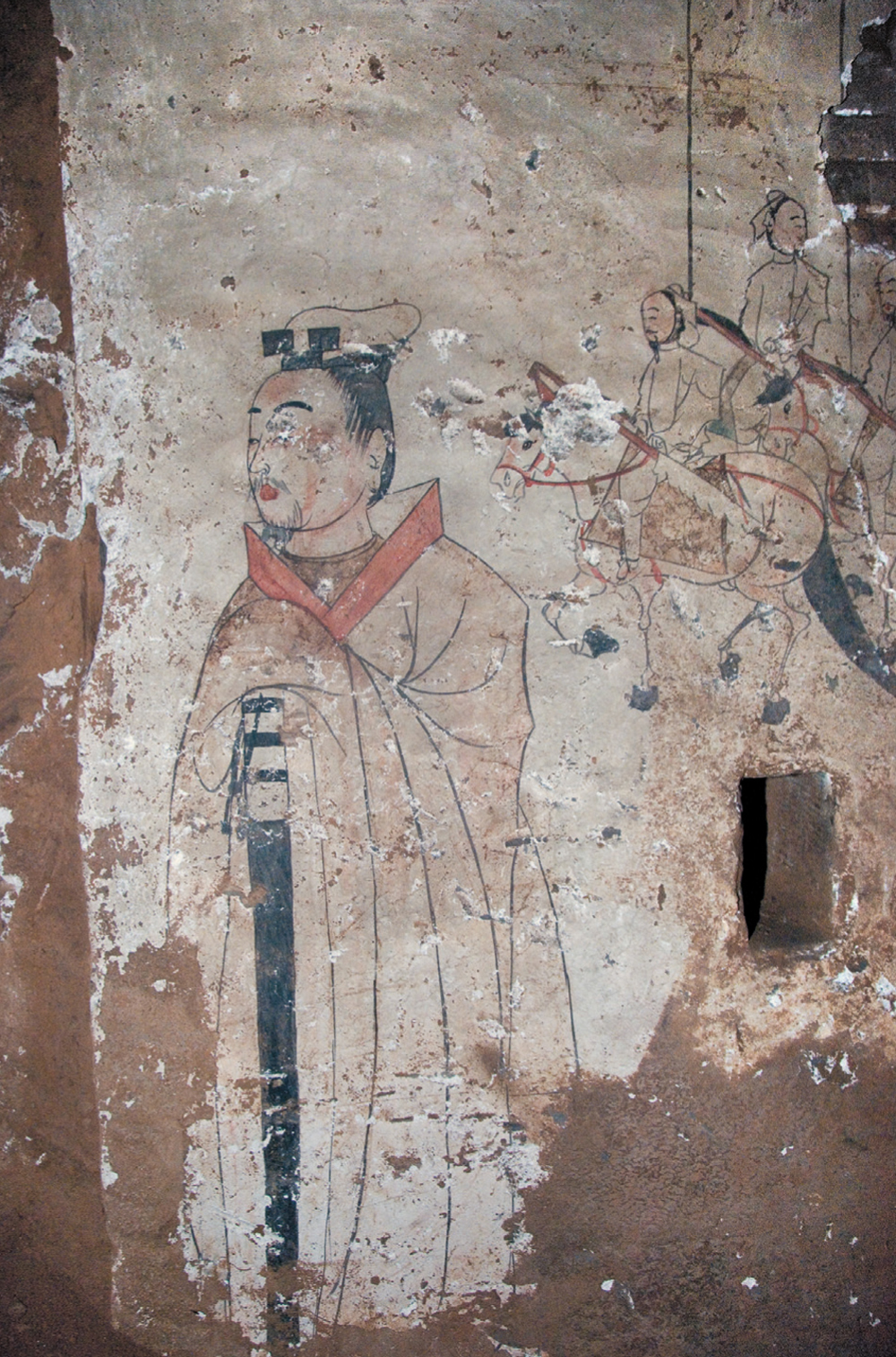
Archaeologists in Shuozhou City, in China, have uncovered a "mural tomb" dating back almost 1,500 years. Believed to be used by a local military commander and his wife the murals cover about 860 square feet of space. This particular mural is on the west wall of the passageway leading into the tomb. It shows a door guard leaning against his sword, watching warily.
Protected in death
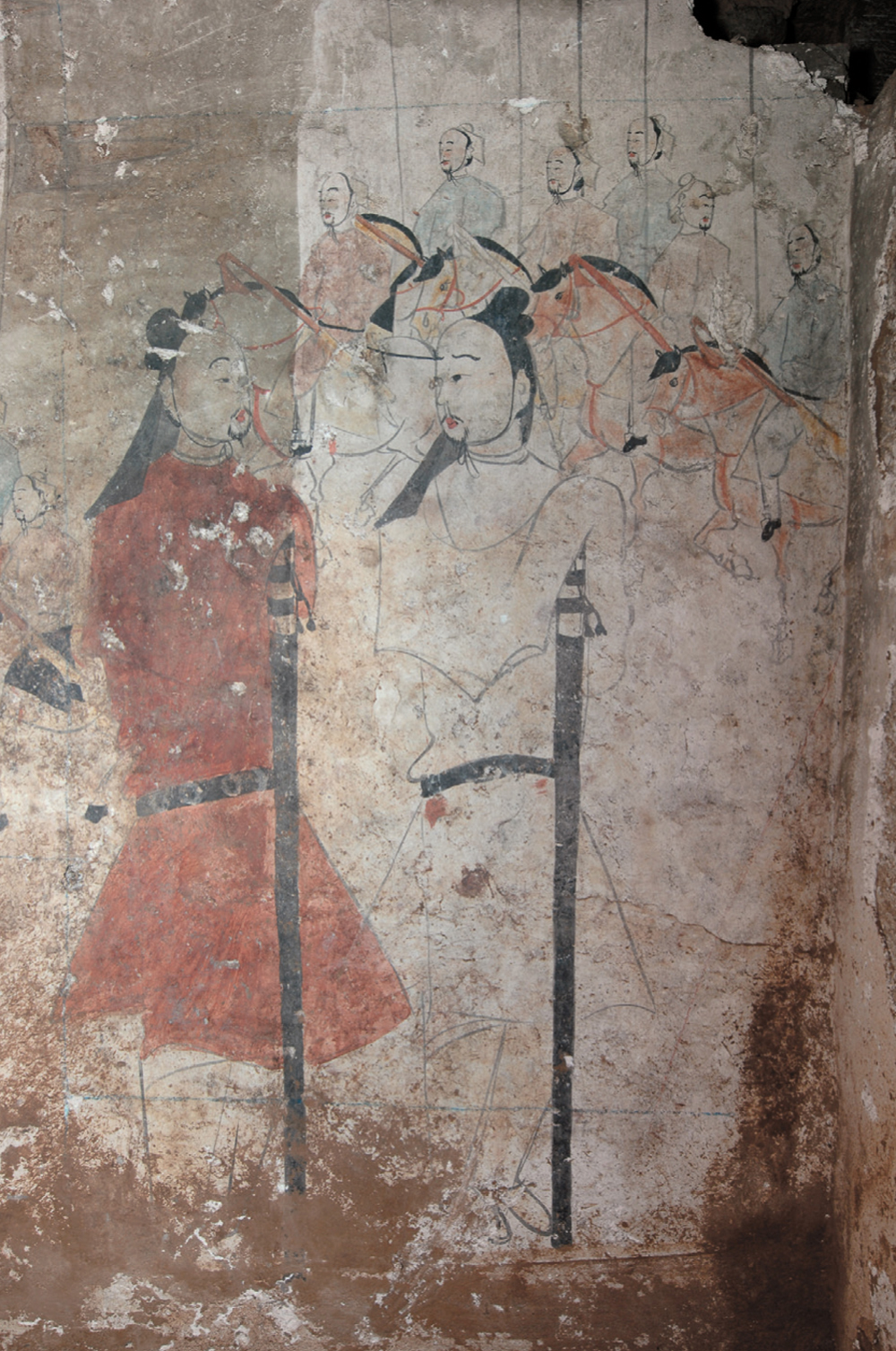
On the opposite wall of the passageway a guard of honor, some mounted on horses, stand watch over the tomb. The color of their uniforms is still vibrant despite the passage of time.
Announcing your entrance
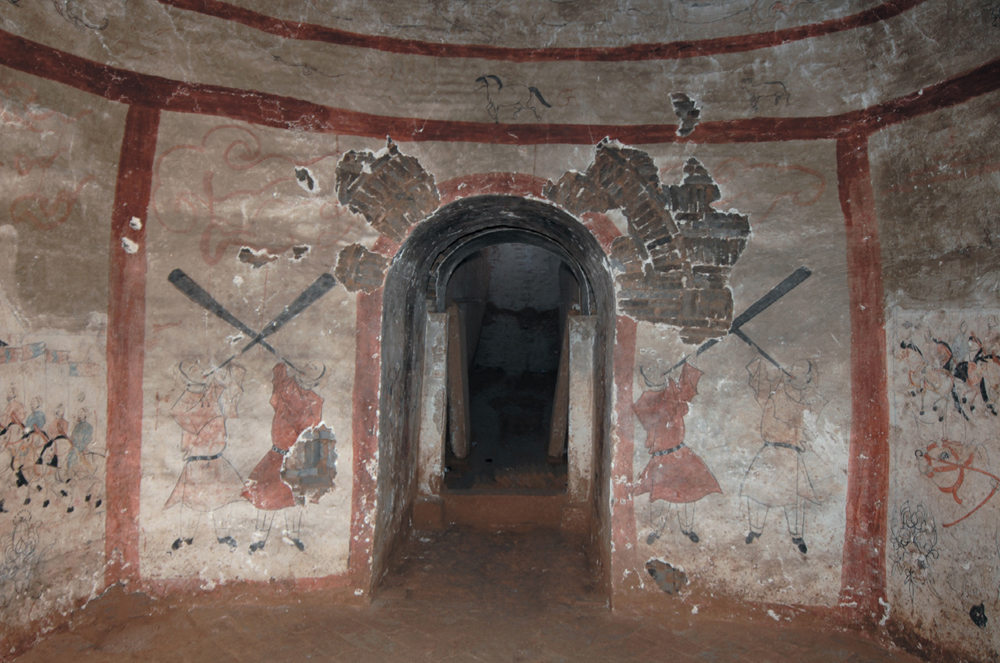
Four men blow into long horns at the entranceway into the tomb chamber, located on the south wall.
Forever together
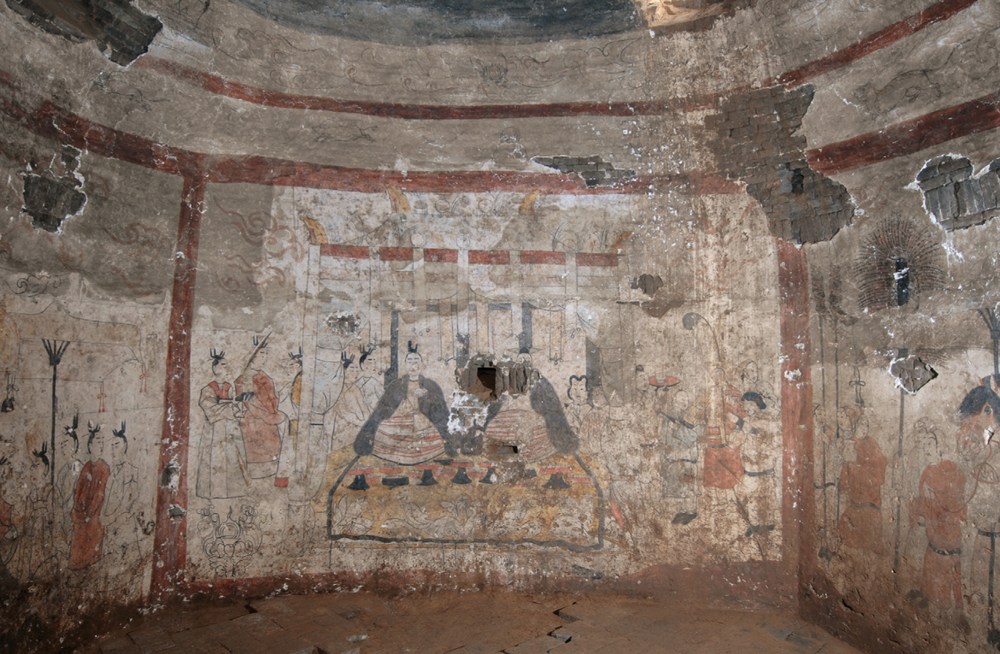
An image of the two buried individuals was painted on the north wall of the tomb chamber. At right is the male, believed to be a local military commander, and at left is his wife. They are seated under a canopy enjoying a banquet. To the right of the depiction of the buried male are male musicians and attendants. To the left of his wife are female musicians and attendants. Notice that all the females have their hair tied in the same style, a shape described by archaeologists as looking like a "flying bird."
Great detail of the celebration
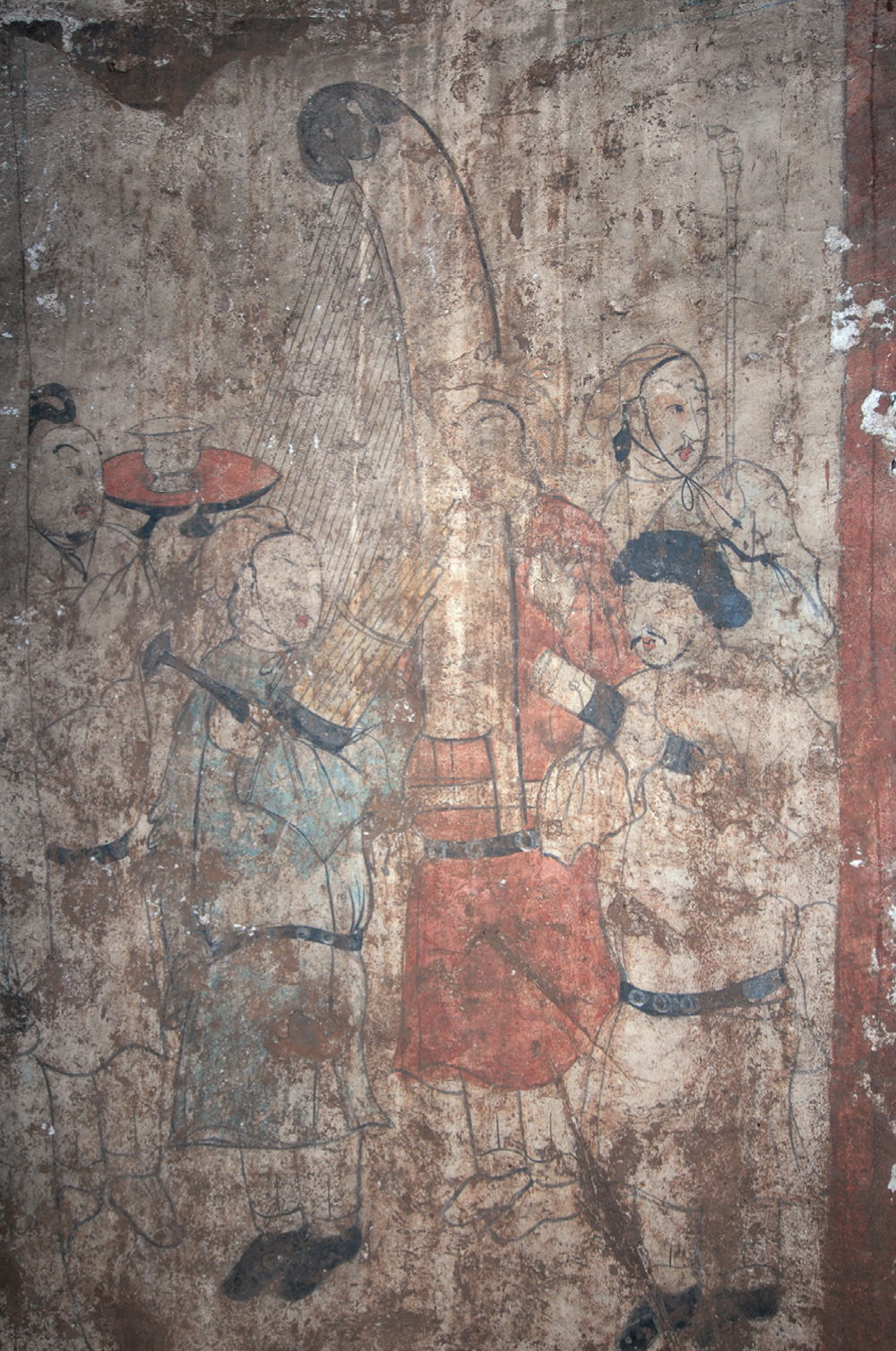
The male musicians to the right of the depiction of the buried male. One is playing a large harp while to his left a musician in blue holds a windpipe instrument.
Cavalry at the ready
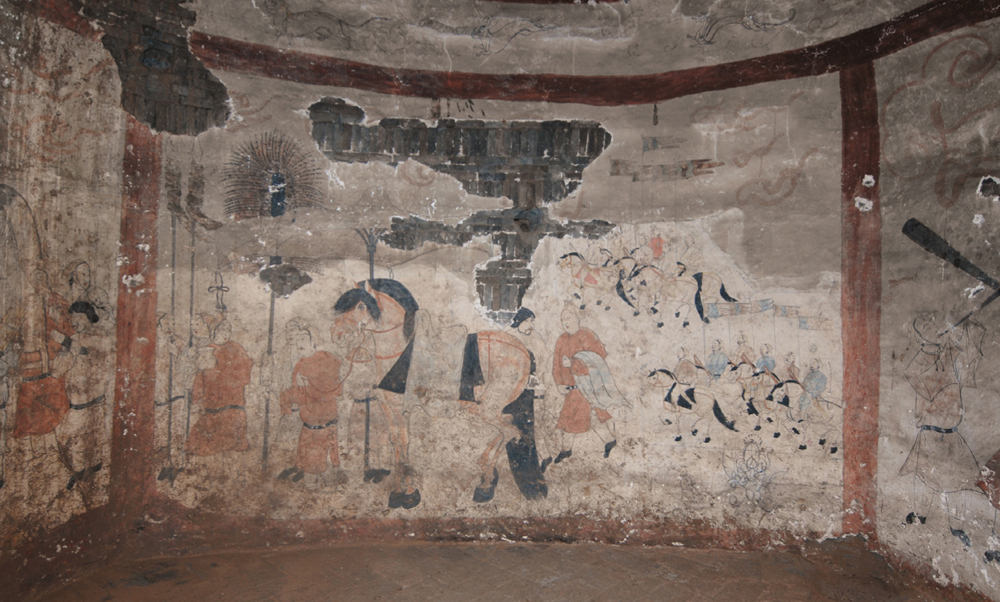
On the east wall of the tomb chamber is a great red horse with two cavalry lines, off in the distance, to the right.
Detail of the cavalry
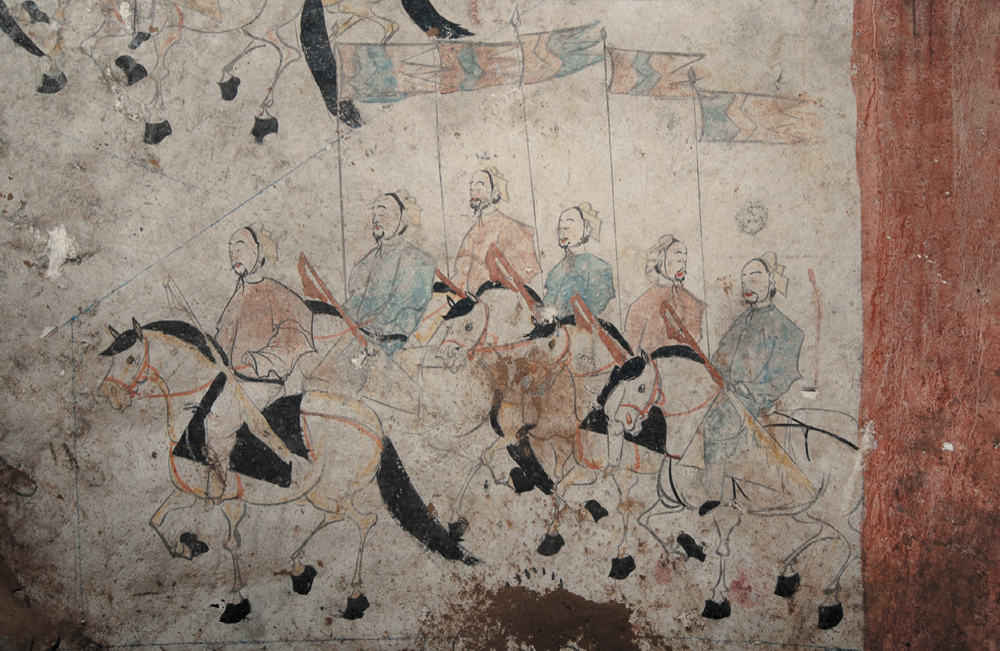
An up-close view of a cavalry line, the color of their pennants can still be seen.
Sign up for the Live Science daily newsletter now
Get the world’s most fascinating discoveries delivered straight to your inbox.
Strangers on a journey
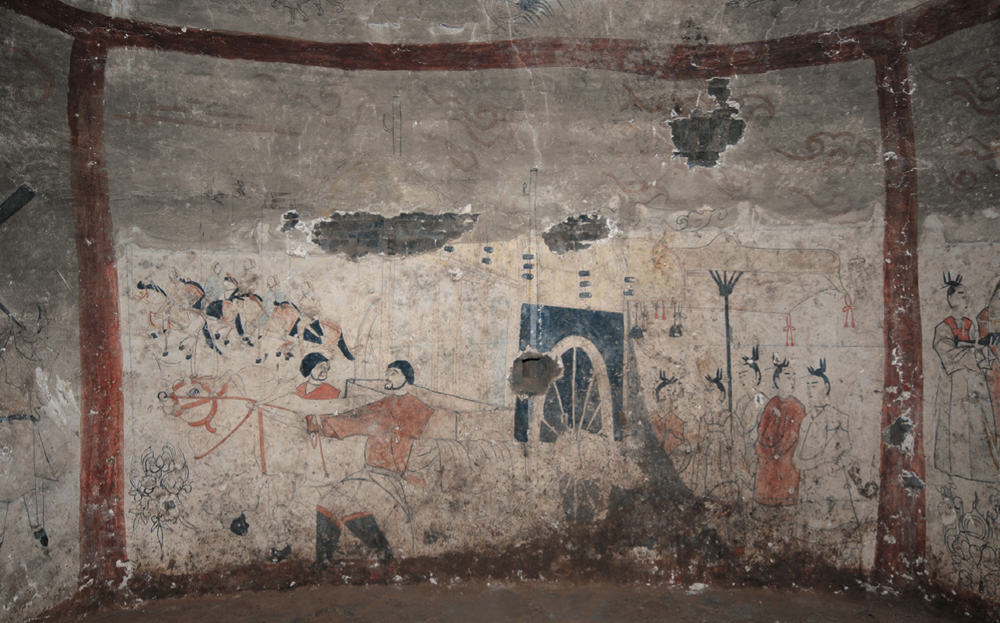
On the west wall of the tomb chamber is a carriage pulled by a tan ox. The two drivers each have black hair and a "curly beard" and may be foreigners. Behind the carriage are five female attendants, a parasol above them.
Detail on female attendents
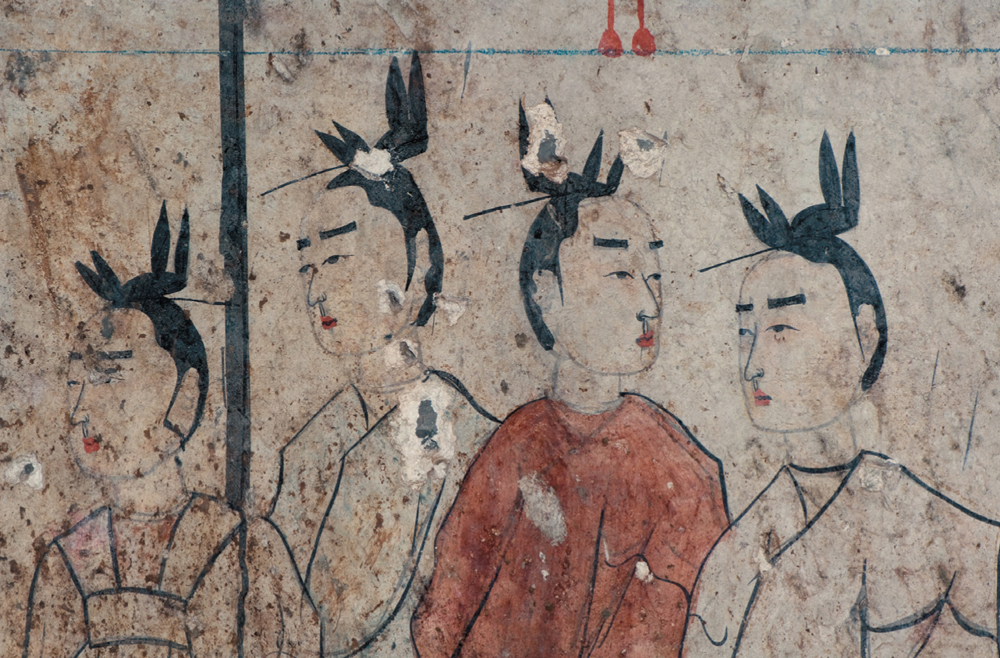
A close-up of four of the female attendants under a parasol. Notice the detail of their "flying bird" hairstyles.
An infinite sky
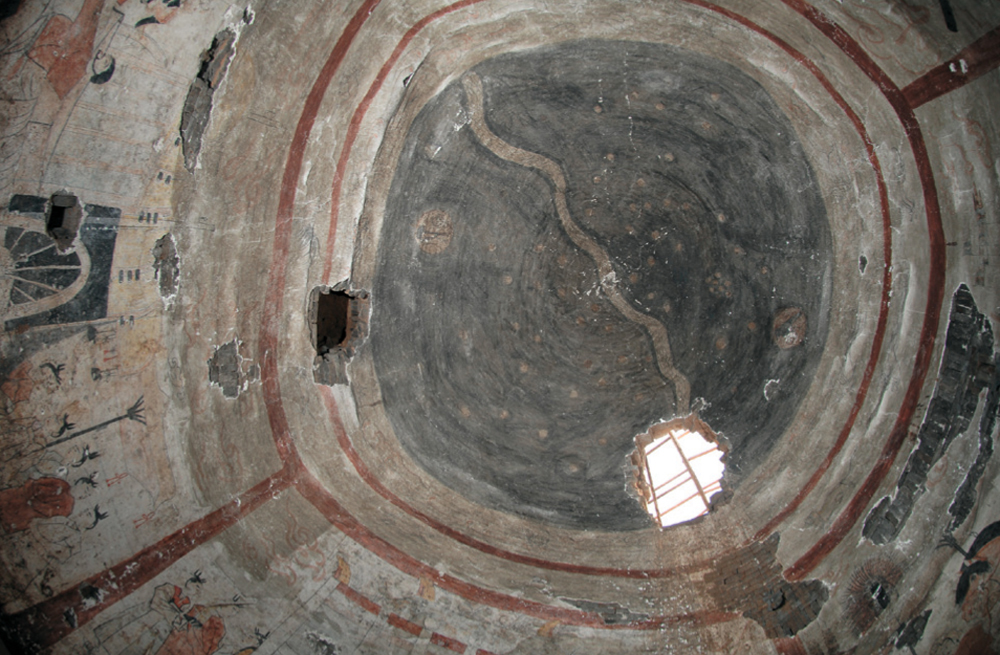
The dome ceiling of the tomb is painted dark gray to "signify the infinite space of the sky." A silver river, with waves, weaves across the sky representing the Milky Way galaxy. Stars can be seen and the sun is represented at center-right and the moon at center-left.
A light for eternity
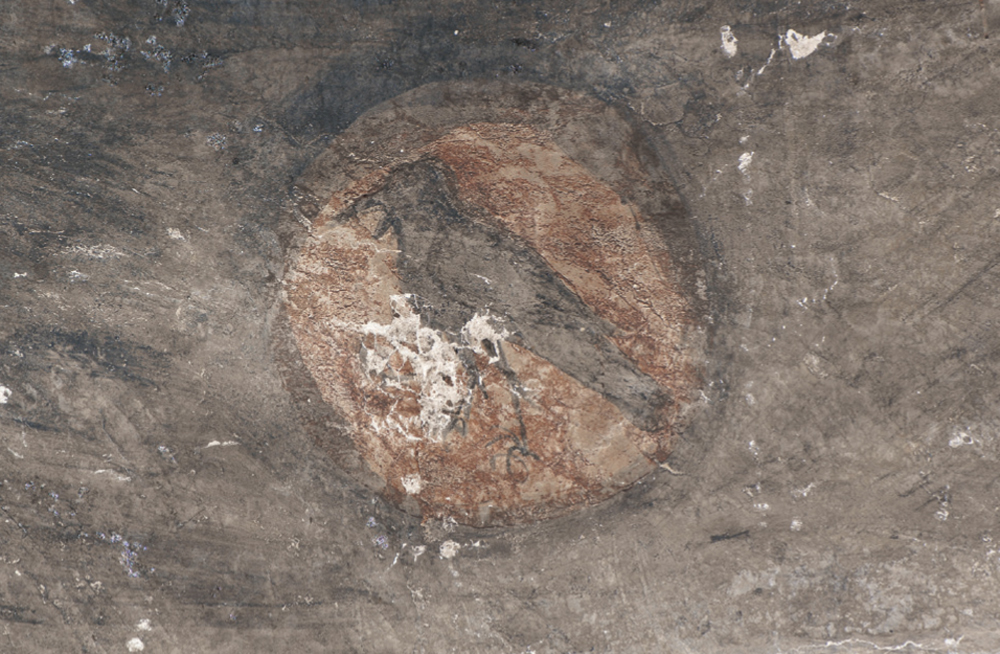
The sun, in the sky, is shown with a "gold crow" at center.

Owen Jarus is a regular contributor to Live Science who writes about archaeology and humans' past. He has also written for The Independent (UK), The Canadian Press (CP) and The Associated Press (AP), among others. Owen has a bachelor of arts degree from the University of Toronto and a journalism degree from Ryerson University.









